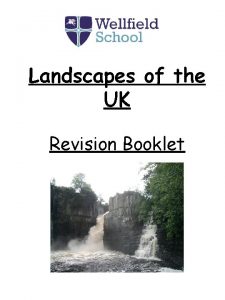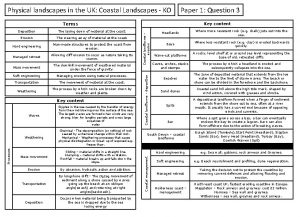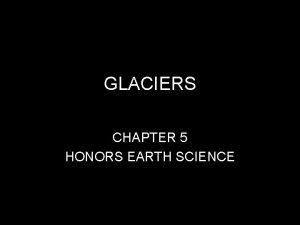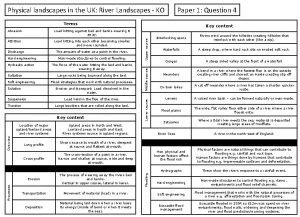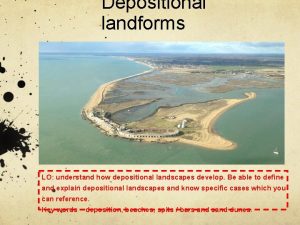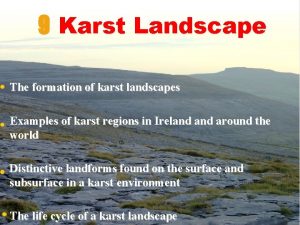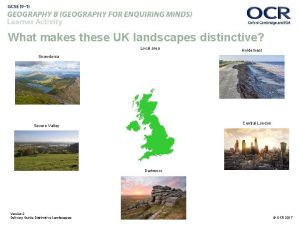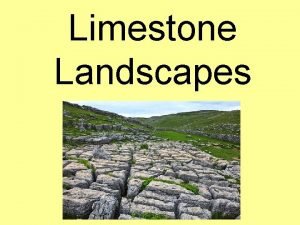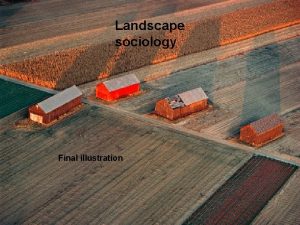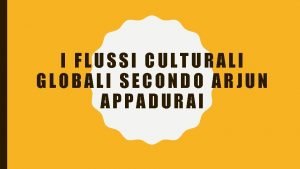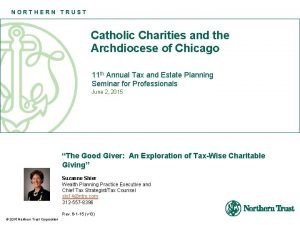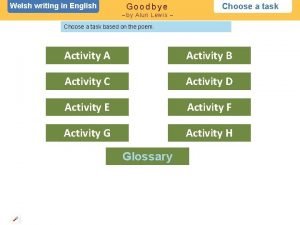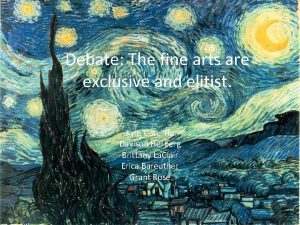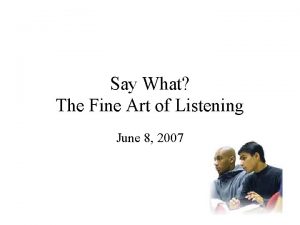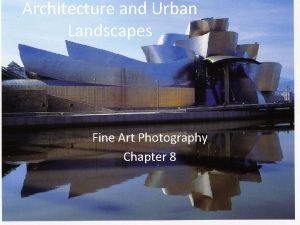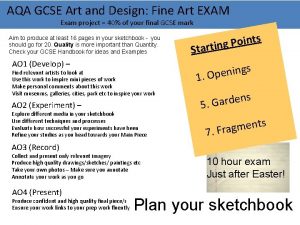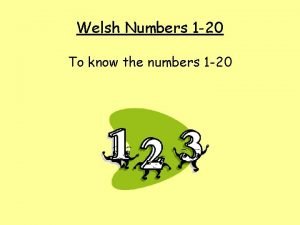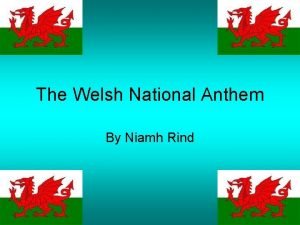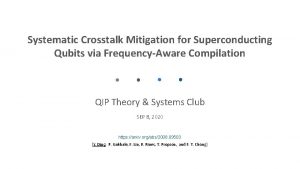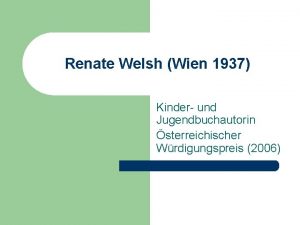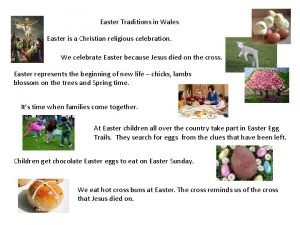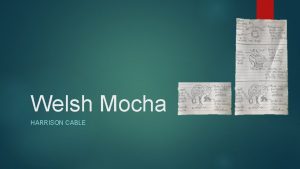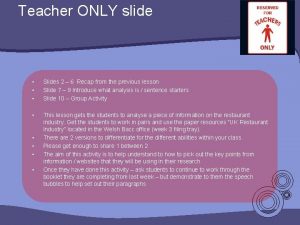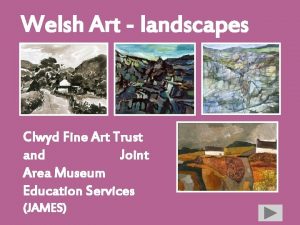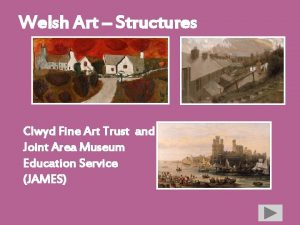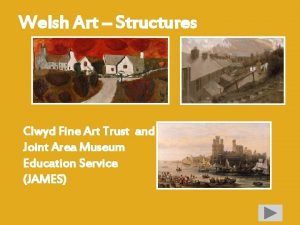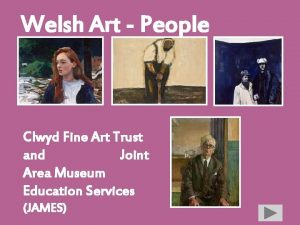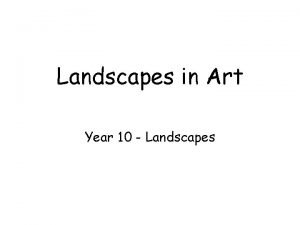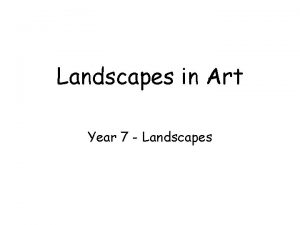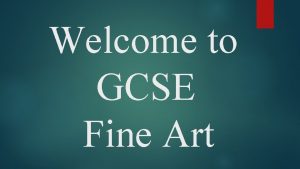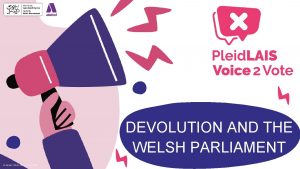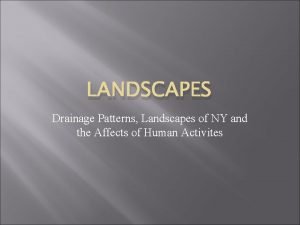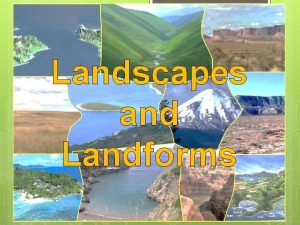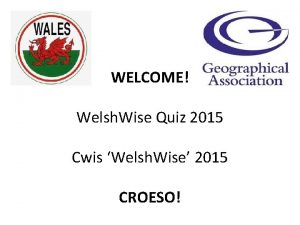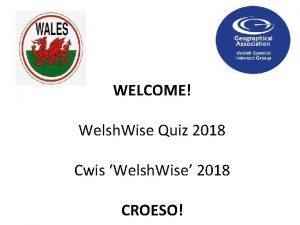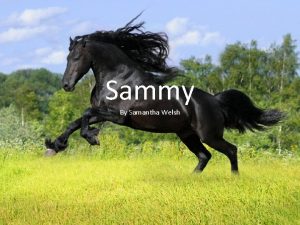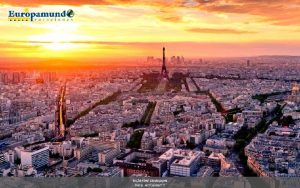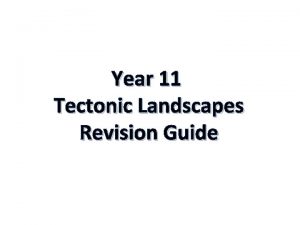Welsh Art landscapes Clwyd Fine Art Trust and
































- Slides: 32

Welsh Art - landscapes Clwyd Fine Art Trust and Joint Area Museum Education Services (JAMES)

landscapes Contents Drawing Discussion Printmaking More Pictures Images courtesy of Clwyd Fine Art Trust and Joint Area Museum Education Service Exit

1. Discussion Landscape is one of the main images found in art over the centuries and we are going to look at examples of landscapes by some of Wales’ most famous artists. Here we see a landscape by Sir Kyffin Williams. By placing a road in the forefront to draw us in to the image, he has created a perspective effect. His subtle use of ink and wash has produced density of tone and texture, which creates effective shadowing and distance. Sir Kyffin Williams Rhwng Dwy Afon Cyffylliog / Hendre


This painting of Penrhyn Quarry by Peter Prendergast clearly shows how an effective choice of corresponding colours can reproduce the atmosphere of a place. By reflecting the light colour of the sky beside dark blue, purple and black the artist has shown the huge scale and solidity of the rock. The image evokes feelings of awe and dominance, which truthfully depict the experience of being in the Welsh mountains. Peter Prendergast Penrhyn Quarry


Here we see another image of a quarryscape, this time by Graham Meredith, which shows a completely different style. The composition of both paintings is quite similar, but Graham Meredith is much more subtle with his paint, which created a lightness and beauty, words not usually associated with quarries. Graham Meredith Quarryscape, Minera, 1978


This landscape picture by Elis Gwyn is full of Autumn colours, and the dark sky suggests that a storm is on its way. The artist has chosen to show the texture of the hedges and surface of the land, by scratching into the surface of the paint that shows depth. Elis Gwyn Tua’r Gorllewin Elis Gwyn’s combination of colour and texture creates an image that is not only interesting, but also very effective.


Look at the landscapes by Sir Kyffin Williams and Peter Prendergast. Talk about the pictures using words to describe the: Lines and marks e. g. thick, thin, fast, soft etc. Image e. g. effective, dominating, detailed, cold, funny etc.

Where do you think the artist made this work?

Do you think the artist made sketches before making this work? Why do you think this?

Do you think the artist works quickly or slowly? How can you tell this?

Where do you think the artist made this work?

Do you think the artist made sketches before making this work? Why do you think this?

Do you think the artist works quickly or slowly? How can you tell this?

What is similar about the works?

What is different?

Which do you like best and why?

What is different about the colours?

Why do you think they chose these colours?

How do the pictures make you feel?

2. Drawing Materials needed: Sketch book or paper and drawing boards, charcoal, pencils (2 B or softer), white oil pastels In the classroom, get to know your materials Pencil • With a sharp pencil make light thin lines in your sketch book. • Starting with a thin pencil line, press a little harder to make the line darker. • Does the line look thicker as it gets darker? • Use the edge of your pencil to make thick grey marks. The harder you press the darker the mark is. Use this technique for tone in your drawings. • Use crossing pencil lines to create tone – this is called cross-hatching. The closer together the lines are the darker the tone will be.

Charcoal • Charcoal is a very fragile material, press too hard and it will shatter. It is made out of burnt wood and smudges very easily, a bit like chalk. • Use the edge of your charcoal stick to make thin lines. Press very lightly for faint marks, a little harder for darker lines. • Use the circular end of your charcoal stick to make thin, black lines, holding the stick upright. • Use the side of the charcoal stick to create large areas of tone.

• Use the new skills you have learnt to reproduce some of the marks found in Sir Kyffin Williams’ and Peter Prendergast’s work. • Take your sketch book (or drawing board and paper) outside with a pencil and a charcoal stick. • Make drawings of the landscape/townscape you can see from the school yard/field. • Use as many different marks as possible. Try to use marks similar to those seen in Sir Kyffin Williams’ and Peter Prendergast’s work.

• Back in the classroom use white oil pastel to add lighter areas to your work. • Look at your classmates’ work. What differences can you see between your work and their own? • How many new marks can you see in the other pupils’ work that you can’t see in yours? • Compare your work to Sir Kyffin Williams’ and Peter Prendergast’s work. What is similar and what is different? • Having looked at all the work, what would you change in yours to make it more effective?

3. Printmaking: Monoprints Materials needed: A 4 laminated sheets (or sheets of perspex), rollers, brushes, pencils, A 4 drawing paper, printing ink, scrap paper, tissue paper and water pots. Follow the instructions in worksheet 1 worksheet 2 and worksheet 3 to make your monoprints

Compare your prints • What is different about each print? • What is similar? • Which print is most effective? • What could you do to make the print more effective? (draw on with oil pastels or coloured pencils etc. ) Look at Sir Kyffin Williams’ and Peter Prendergast’s work again • What is similar between their work and your work? • What is different? • Looking at all the work you have done, what do you think you should do next to develop your ideas? ( Painting, collage, work done in groups etc. )


Sir Kyffin Williams Hill Farmers

Elis Gwyn Pencoed
 Landscapes and landforms booklet
Landscapes and landforms booklet Landscapes and landforms
Landscapes and landforms Chapter 5 glaciers oceans and landscapes
Chapter 5 glaciers oceans and landscapes Uk physical landscapes
Uk physical landscapes Fpm landscapes
Fpm landscapes Depositional landscapes
Depositional landscapes Examples of karst landscapes in ireland
Examples of karst landscapes in ireland What makes landscapes distinctive
What makes landscapes distinctive Region 5 themes of geography
Region 5 themes of geography What is this ?
What is this ? Biosphere definition biology
Biosphere definition biology Appadurai etnorami
Appadurai etnorami Northern trust charitable trust
Northern trust charitable trust Alun lewis goodbye
Alun lewis goodbye Hegel classical art
Hegel classical art Is debate a fine art
Is debate a fine art Content oriented listener
Content oriented listener Fine art photography architecture
Fine art photography architecture Aqa gcse art and design
Aqa gcse art and design 20 in welsh
20 in welsh Mae hen wlad fy nhadau translation
Mae hen wlad fy nhadau translation Welsh-powell algorithm
Welsh-powell algorithm Welsh ghost stories
Welsh ghost stories Snooker rules
Snooker rules Renate welsh
Renate welsh Region coloring
Region coloring Bill welsh rutgers
Bill welsh rutgers Easter symbols and meanings
Easter symbols and meanings How lead selector selects electrodes
How lead selector selects electrodes Welsh mocha
Welsh mocha Welsh food
Welsh food Ruru welsh bacc
Ruru welsh bacc Tasha welsh
Tasha welsh
